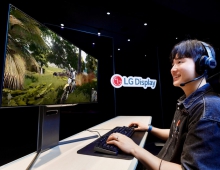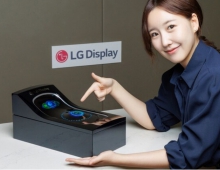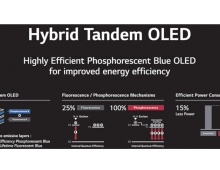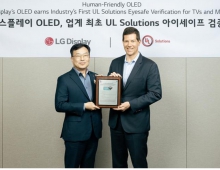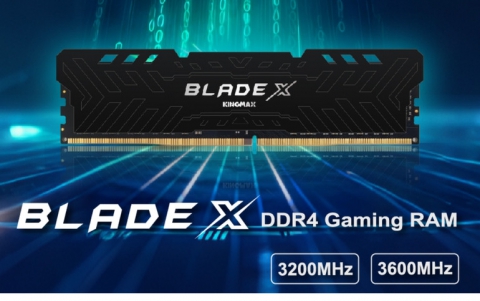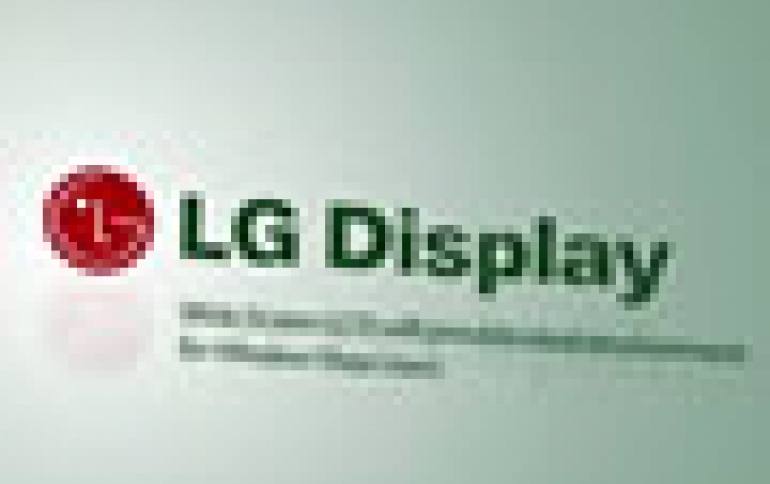
LG Display Is The Top Panel Supplier of Tablet Screens
LG Display is the main supplier of display panels for Apple iPad, Amazon Kindle Fire, and Barnes & Noble Nook devices, according to IHS iSuppli.
While Apple, Amazon, and Barnes & Noble have very different tablet offerings, LG Display finds itself sought after by the three tablet manufacturers because of the in-plane switching (IPS) technology that the South Korean electronics titan uses for its small - and medium-sized liquid crystal display (LCD) panels. The panels, which range in size from 7 to 10 inches, also are used in devices like smartphones, digital still cameras and MP3 players.
LG Display is the leader by a wide margin of the tablet display market, with 51 percent market share in the second quarter, according to iSuppli data. The company is well ahead of fellow South Korean rival Samsung Mobile Display - which also supplies panels for the Apple iPad as well for its own Samsung Galaxy Tab - at a distant second with 35 percent share, half that of LG. Third-place Chimei Innolux Corp. of Taiwan, another Apple supplier that likewise provides for the Chinese white-box market, controls a 9 percent share. The remaining 5 percent of the tablet display market is split among several smaller firms.
Tablet shipments are expected to surge an astounding 462 percent this year compared to 2010. And at a time when sales of many consumer electronic items have stalled, tablets will maintain a robust compound annual growth rate of 38 percent from 2011 to 2015.
LG Display owes its dominance in the tablet display market to the firm's active-matrix amorphous silicon LCD panels utilizing IPS technology, which offers faster response speeds, wide viewing angles up to 179 degrees, and no after image - all while consuming 30 percent less power. Another variant of the wide viewing angle technology similar to IPS LCD is Fringe Field Sequential (FFS) LCD. The patent for FFS LCD resides with Taiwanese-based LCD supplier E Ink (Hydis). However, because of the lack of capacity at E Ink to manufacture larger-sized panels, E Ink licenses this technology to other LCD suppliers, such as LG Display and a few other suppliers. LG Display also enjoys a competitive advantage here, as it devotes more capacity than other manufacturers to making media tablet PCs.
Such generous capacity - as well as being Apple's main supplier - has catapulted LG to a favorable position in the market. Tablet PC prices currently command a premium over regular twisted nematic (TN) LCDs due to growing demand. Currently, a 9.7-inch Tablet PC IPS display sells at around $60, while a 7-inch Tablet PC IPS display sells for around $50.
For companies hoping to enter the tablet display space, a number of barriers will have to be surmounted. For one, devices hoping to merit consideration for inclusion among best-selling tablets must meet the high specs on pixel format and display size specifi cations.
The standard pixel format for 9.x-inch displays - the size of the iPad, and the dominant size in the industry at 63 percent market share - is the QHD pixel format at 1,024 x 600 and 170 pixels per inch. Meanwhile, the standard pixel format for 7.x-inch displays - the size used by the new Kindle Fire and the Galaxy Tab, with 18 percent of the market - at 1,024 x 768 makes it a 132 pixel-per-inch display. There are conjectures that Apple will implement the Retina display resolutions of greater than 300 pixels per inch in the new iPad 3 expected to launch in 2012. If so, this will up the resolution trend in the media tablet PC space, challenging other tablet makers to follow suit.
Panel suppliers that cannot meet these pixel measures or produce viable displays with efficient manufacturing at such sizes and resolutions will find it very hard to compete in the market, IHS believes. The IPS technology may soon encounter stiff competition, however. Sharp has introduced a new oxide material consisting of indium, gallium and zinc - hence, the name IGZO - producing pixel speeds 20 to 30 times faster than amorphous silicon for quicker refresh rates. Moreover, IGZO displays have higher energy levels and are more efficient because of the downsized transistors and increased light transmittance for each pixel.
IGZO production can be achieved on existing amorphous silicon lines with very little modifications made, making it more cost competitive than low-temperature polysilicon. This new cost-competitive, high-end display will be manufactured at Sharp's eighth-generation fab in the city of Kameyama, with production expected to start this year.
LG Display is the leader by a wide margin of the tablet display market, with 51 percent market share in the second quarter, according to iSuppli data. The company is well ahead of fellow South Korean rival Samsung Mobile Display - which also supplies panels for the Apple iPad as well for its own Samsung Galaxy Tab - at a distant second with 35 percent share, half that of LG. Third-place Chimei Innolux Corp. of Taiwan, another Apple supplier that likewise provides for the Chinese white-box market, controls a 9 percent share. The remaining 5 percent of the tablet display market is split among several smaller firms.
Tablet shipments are expected to surge an astounding 462 percent this year compared to 2010. And at a time when sales of many consumer electronic items have stalled, tablets will maintain a robust compound annual growth rate of 38 percent from 2011 to 2015.
LG Display owes its dominance in the tablet display market to the firm's active-matrix amorphous silicon LCD panels utilizing IPS technology, which offers faster response speeds, wide viewing angles up to 179 degrees, and no after image - all while consuming 30 percent less power. Another variant of the wide viewing angle technology similar to IPS LCD is Fringe Field Sequential (FFS) LCD. The patent for FFS LCD resides with Taiwanese-based LCD supplier E Ink (Hydis). However, because of the lack of capacity at E Ink to manufacture larger-sized panels, E Ink licenses this technology to other LCD suppliers, such as LG Display and a few other suppliers. LG Display also enjoys a competitive advantage here, as it devotes more capacity than other manufacturers to making media tablet PCs.
Such generous capacity - as well as being Apple's main supplier - has catapulted LG to a favorable position in the market. Tablet PC prices currently command a premium over regular twisted nematic (TN) LCDs due to growing demand. Currently, a 9.7-inch Tablet PC IPS display sells at around $60, while a 7-inch Tablet PC IPS display sells for around $50.
For companies hoping to enter the tablet display space, a number of barriers will have to be surmounted. For one, devices hoping to merit consideration for inclusion among best-selling tablets must meet the high specs on pixel format and display size specifi cations.
The standard pixel format for 9.x-inch displays - the size of the iPad, and the dominant size in the industry at 63 percent market share - is the QHD pixel format at 1,024 x 600 and 170 pixels per inch. Meanwhile, the standard pixel format for 7.x-inch displays - the size used by the new Kindle Fire and the Galaxy Tab, with 18 percent of the market - at 1,024 x 768 makes it a 132 pixel-per-inch display. There are conjectures that Apple will implement the Retina display resolutions of greater than 300 pixels per inch in the new iPad 3 expected to launch in 2012. If so, this will up the resolution trend in the media tablet PC space, challenging other tablet makers to follow suit.
Panel suppliers that cannot meet these pixel measures or produce viable displays with efficient manufacturing at such sizes and resolutions will find it very hard to compete in the market, IHS believes. The IPS technology may soon encounter stiff competition, however. Sharp has introduced a new oxide material consisting of indium, gallium and zinc - hence, the name IGZO - producing pixel speeds 20 to 30 times faster than amorphous silicon for quicker refresh rates. Moreover, IGZO displays have higher energy levels and are more efficient because of the downsized transistors and increased light transmittance for each pixel.
IGZO production can be achieved on existing amorphous silicon lines with very little modifications made, making it more cost competitive than low-temperature polysilicon. This new cost-competitive, high-end display will be manufactured at Sharp's eighth-generation fab in the city of Kameyama, with production expected to start this year.


